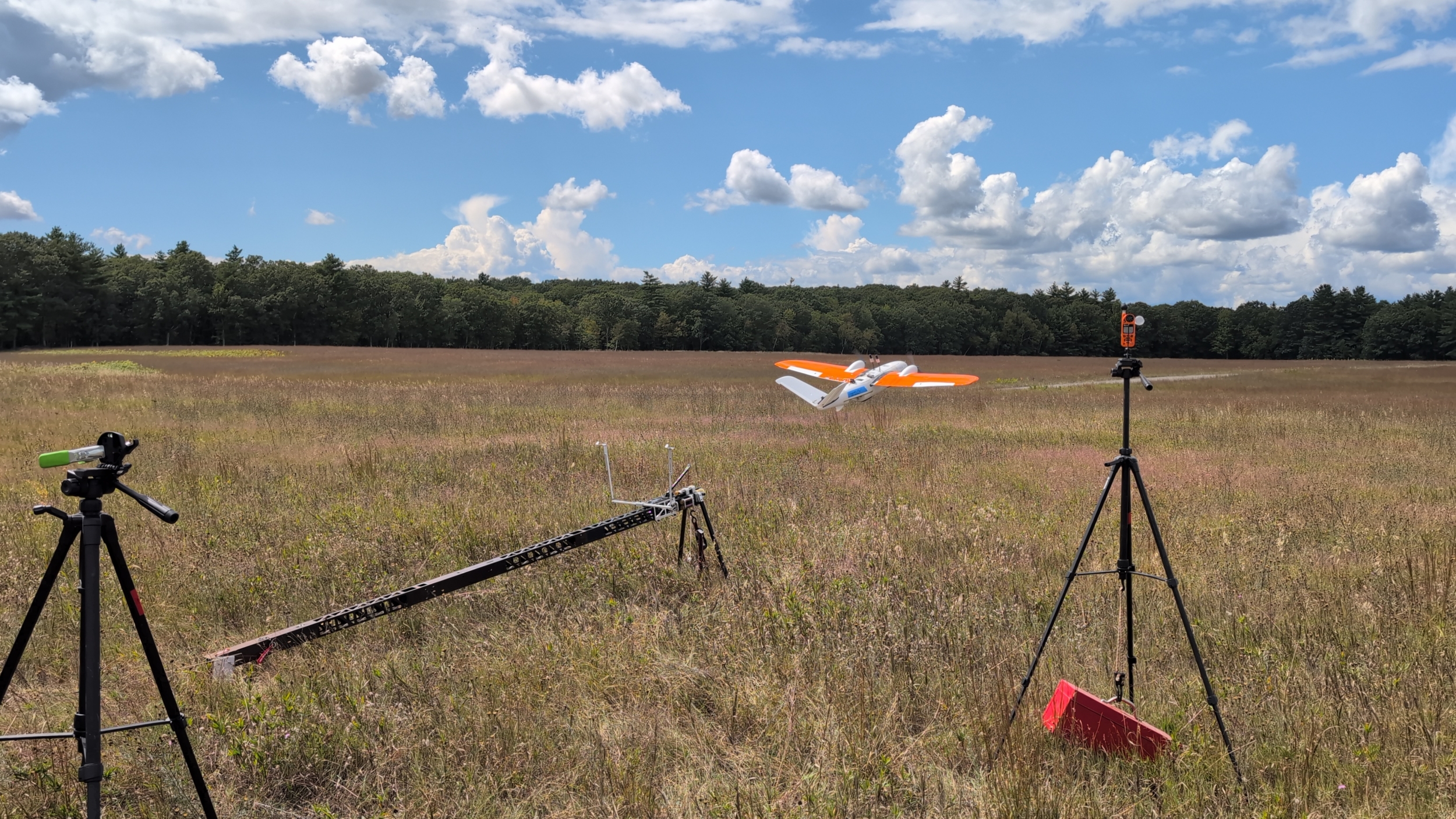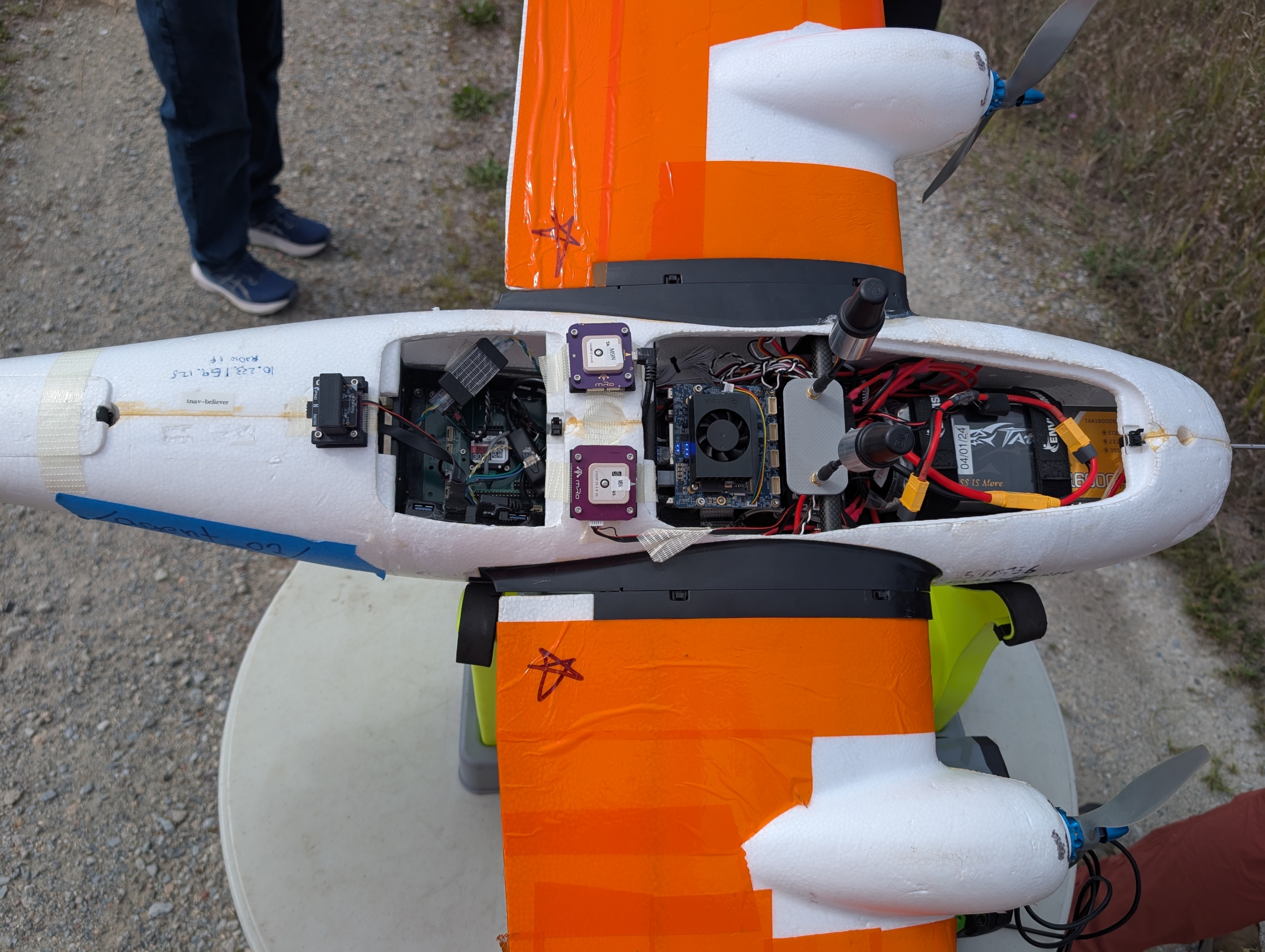Two 2025 AI Accelerator awards were presented to Laboratory research teams
This summer, two research teams including Lincoln Laboratory staff members were recognized by the Department of the Air Force (DAF)−MIT Artificial Intelligence Accelerator (AIA) for their work in developing AI technologies for autonomous robot collaboration and secure networking. Established in 2019, the AIA seeks to advance AI technologies for U.S Air Force operations and broader societal needs. Recipients of the yearly AIA awards are chosen from among the AIA community, which include airmen, researchers, faculty, and students from the DAF, Lincoln Laboratory, and MIT.
Robots for disaster recovery
The Multi-Robot Learning for Personnel Recovery project team received the AIA Directors’ Award, which recognizes outstanding collaboration with stakeholders and across the AIA, for their work with the Air Force Special Operations Command Adaptive Airborne Enterprise. The team comprises Dan Griffith and Daniel Castellarin from the Laboratory's Advanced Capabilities and Systems Group as well as Ifueko Igbinedion, Nathan Hughes, and Major Stephanie Riley.

The team is developing algorithms to help autonomous vehicles assist in personnel recovery efforts within conflict and disaster zones. The project targets autonomous operations near the ground, which are challenging because of the presence of foliage, wind, dust, or potential hostile forces. The team envisions a fleet of autonomous vehicles that can deploy to locate distressed individuals and provide rescuers with real-time data analysis, ensuring the safety of both the rescuers and the rescued.

Techniques for securing networks
The Better Networks via AI Enabled Hierarchical Connection Science project team received the AI Accelerator Transition Award, which recognizes accomplishments in transitioning research to the DAF, its partners, or the open-source community. This project aims to combat the rise of cyberattacks through innovations in high-performance, privacy-preserving network sensing and analysis that fuse diverse data to create an understandable and enriched view of network activities. The team received the award for delivering AI, networking, and policy innovations to the DAF and industry.
The team's work in AI anonymized network sensing capabilities has been adopted by lead cybersecurity and AI processor companies such as Nvidia and was highlighted at the 2025 Nvidia Global Technology Conference. Their work has also been integrated into the U.S. Cyber Command's Persistent Cyber Training Environment, and the U.S. Air Force used the team's analysis techniques to reveal massive spoofing capabilities of unknown origin and intent. In addition, their pioneering AI and legal policy analyses have played a role in shaping government AI policy and Air Force AI doctrine, and have spurred the rapid revision of global copyright practices to account for AI training.
The team members are Vijay Gadepally, Michael Houle, Hayden Jananthan, Michael Jones, Jeremy Kepner, Peter Michaleas, Ritesh Patel, Sandeep Pisharody, Andrew Prout, and Gabe Wachman of Lincoln Laboratory and Master Sergeant Chasen Milner, Lieutenant Colonel Sean Atkins, Technical Sergeant Bill Cashman, Thomas Hardjono, Sophia Lockton, Shayne Longpre, Alex Pentland, Shahar Shomin, and Colonel Scott Weed.
The full list of 2025 AIA award recipients appears in the DAF-MIT AIA press release.
Inquiries: contact Anne McGovern.